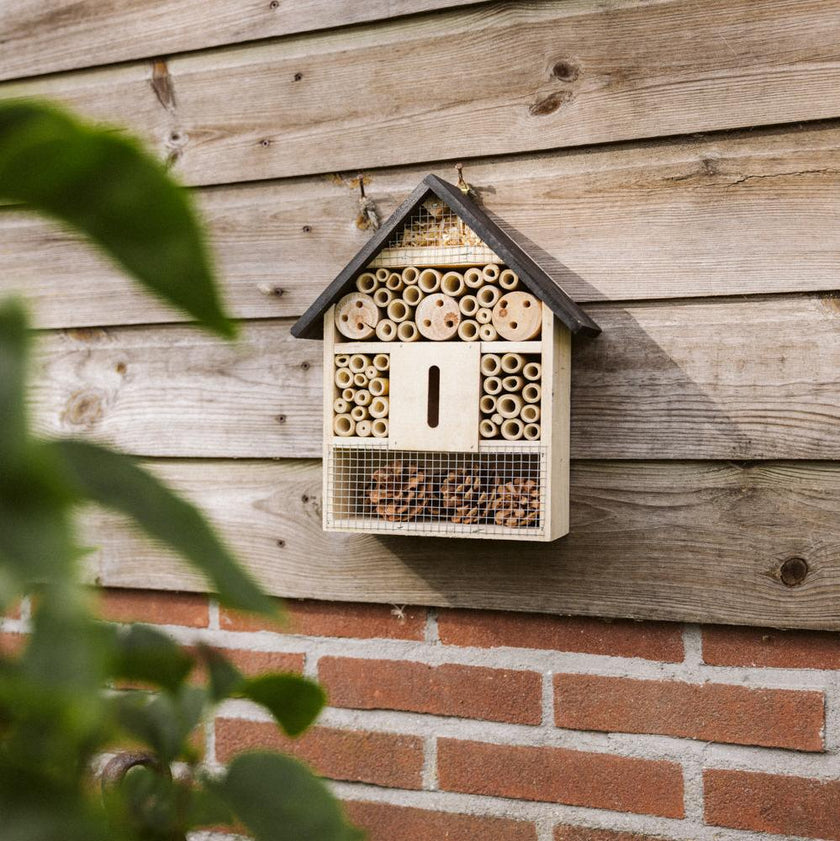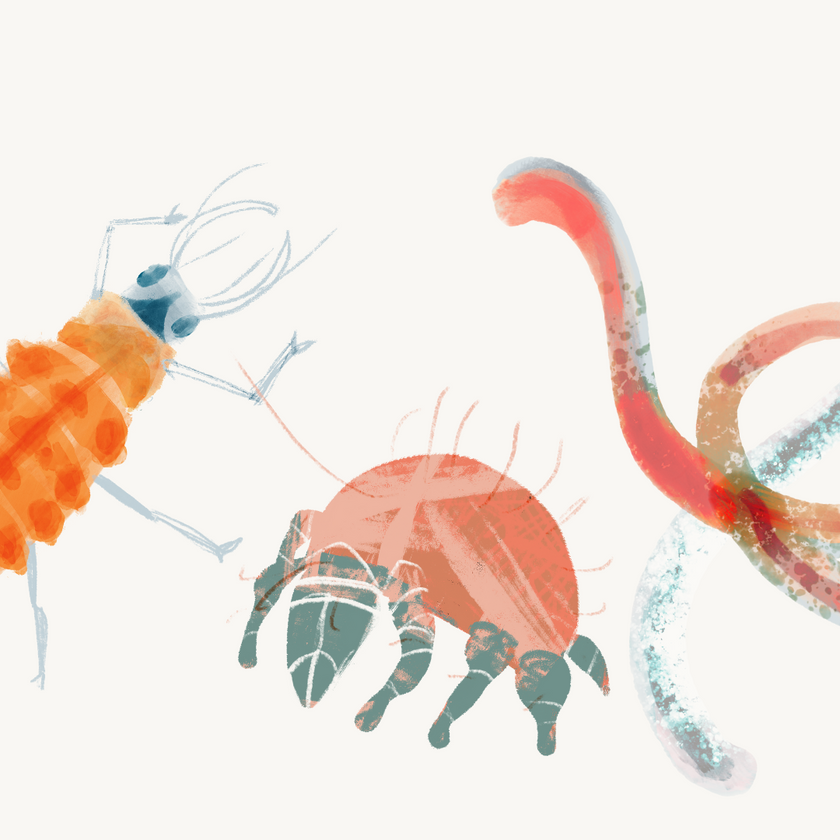
The microscopic Felti nematode with the Latin name, Steinernema feltiae , is a valued force within the Insect Hero team. Felti is the solution for combating many different insect larvae, such as fungus flies, thrips, leatherjackets and much more. Curious how it can help your plant? Then read on!
Who is the Felti nematode?
Felti is a nematode of approximately 0.3 to 1 mm in size. Nematodes, also called nematodes, look like very small transparent ''worms''. You can only see them under the microscope. Despite its short length, Felti is the natural enemy of various types of insect larvae, such as: thrips pupae, fungus fly larvae, leatherjackets and vine weevil larvae. Felti is also used professionally as a biological control agent against oak processionary caterpillars.
How do nematodes work?
Felti cannot walk, swim or crawl, but waits patiently for his victim to pass by. For that reason it is important that the (potting) soil remains moist. The nematodes then sink through the soil, as it were, causing them to spread deeper into the soil.
Once a victim is in sight, it is important for the nematode to penetrate through the natural openings. When this is successful, Felti secretes a symbiotic bacterium into the larva. The bacteria multiply and eventually kill the larva with their toxins within 24 to 48 hours.
Did you know?
The female Felti can lay up to 200 eggs in the larva, which when hatched look for new victims.
Why choose Felti as your fighter?
Felti is easy to apply and, above all, a natural Hero for combating your insect pest without affecting butterflies, bees or other beneficial insects. The nematode is also a native species as it can also be found in Dutch soil.
How can you use nematodes against your pest?
Felti is quite easy to use for both indoor and outdoor plants. The most important factors to take into account mainly apply when releasing Felti outdoors.
The nematode should be released at sunset or on a cloudy day, because Felti dries out quickly if too much UV light shines on it. In addition, the soil temperature is important to take into account. Felti is most effective at a soil temperature of 8 degrees to 25 degrees. It is therefore a nematode that is known for its effectiveness at relatively low temperatures.Felti is supplied in a powder form, where the smallest package already contains 5 million nematodes and that quantity is approximately good for 25 houseplants (10 m² ). You mix the powdery substance with 1 L of water and stir the mixture together. Spread the mixture over the potting soil with, for example, a watering can or garden sprinkler.
Did you know?
Nematodes are also used at football clubs? The English football club 'Forest Green Rovers' uses nematodes every year to keep the fields pest-free.
Combat mourning flies with Felti
To effectively combat fungus flies , it is advisable to combine Felti nematodes with Sticky Leaf sticky traps . Felti tackles the larvae of mourning flies in the soil, while the Sticky Leafs catch the adult mourning flies. A combination package is available with both products.Combat thrips with Felti
To combat thrips effectively, you need several Heroes to eliminate the pest. Felti is an important part of this: the nematodes attack the thrips pupae in the soil. You also need predatory mites and lacewing larvae . You can read more about this on the trips page .
Control grubs, leatherjackets and vine weevil with Felti
Outdoors, you don't have to worry about sending Felti out alone in the battle againstgrubs , leatherjackets and the larvae of the vine beetle . With the Nema Super Sprayer you can easily distribute the nematodes over the ground or lawn.

















































